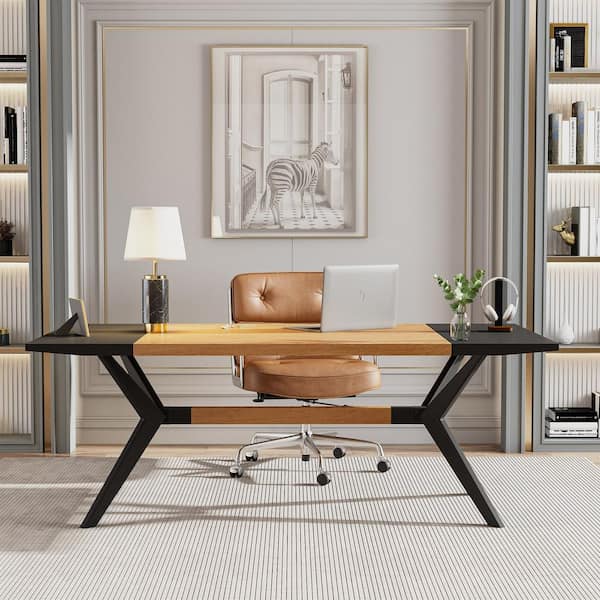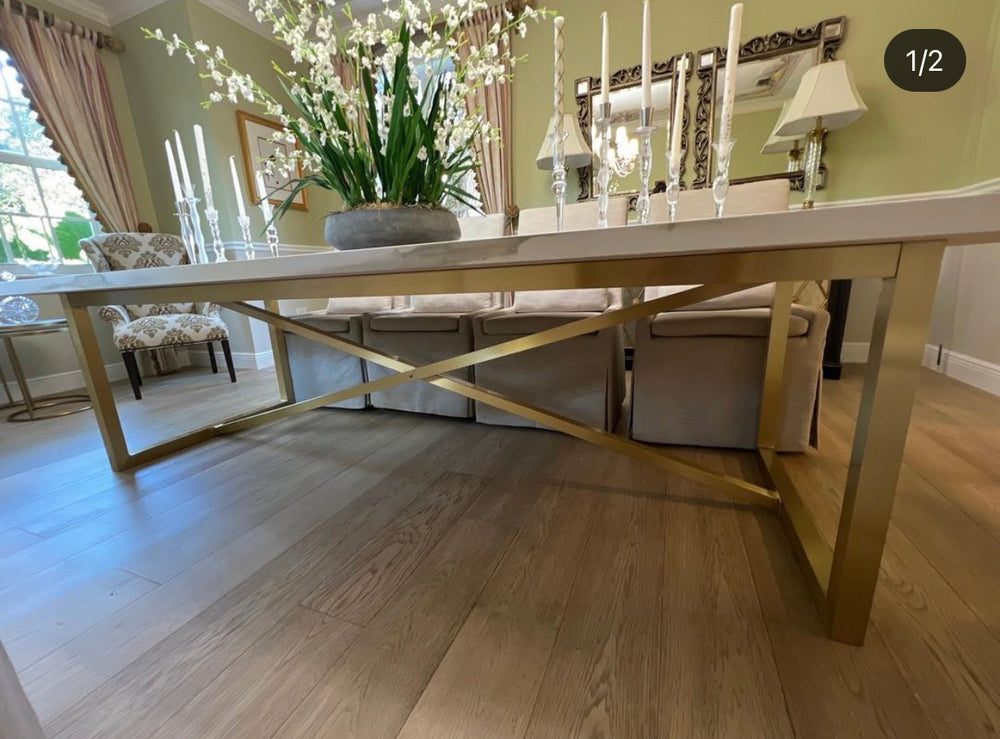The Ultimate Overview to Selecting Durable Dining Room Table Legs
Selecting the Perfect Table: What Styles Work Best for Your Home?
Picking the excellent eating table for your home can be a nuanced procedure that balances appearances and capability. Whether your area leans in the direction of typical elegance, modern minimalism, rustic appeal, or commercial trendy, the selection of styles readily available can cater to diverse tastes. Each style supplies one-of-a-kind advantages and obstacles that can either enhance or interrupt your eating location's consistency. Understanding just how different products, shapes, and dimensions connect with your existing decor is vital. To browse these choices successfully and discover a table that truly complements your home, take into consideration the following elements thoroughly.
Examining Your Room
Reviewing the measurements and design of your eating location is an essential initial action in choosing the ideal dining table. Begin by measuring the size and size of the area, representing doorways, windows, and various other architectural attributes that might influence table positioning. This makes sure that your table not just fits but additionally permits comfortable movement around it.
Think about the number of individuals you typically delight. A table must accommodate your home's everyday requirements while using sufficient versatility for occasional visitors. Generally of thumb, assign at least 24 inches of table size each to guarantee a comfortable eating experience.
It's also important to maintain appropriate clearance around the table. Ideally, there need to go to least 36 inches between the table side and wall surfaces or other furnishings, making it possible for easy access and movement. For spaces where chairs with arms or extra storage systems like buffets are included, enhancing this clearance to 48 inches is a good idea.
Lights and ambience play substantial duties. Make sure that your table aligns with existing illumination fixtures or plan for sufficient illumination solutions. This extensive spatial assessment warranties that your eating table not only fits physically however additionally integrates with your room's overall functionality and visual.
Popular Table Styles

Standard table usually feature elaborate details, bent legs, and rich timber surfaces, evoking a sense of classic elegance. They are best for homes with timeless design or those wanting to include a touch of sophistication to their dining location.
Modern eating tables focus on simplicity and tidy lines, usually including materials like glass and metal. These tables are excellent for contemporary areas, providing a sleek and clean appearance that matches minimalist design viewpoints.
Rustic dining tables, on the various other hand, emphasize all-natural products and a handcrafted look - dining room table legs. They frequently include recovered timber and a distressed finish, creating a warm and welcoming atmosphere. These tables work well in farmhouse-style homes or those seeking a relaxing, organic feel
Industrial eating tables combine basic materials such as steel and timber, typically showcasing an utilitarian visual. This design is appropriate for lofts or metropolitan spaces, including a touch of rugged appeal and durability to the dining experience.
Each style offers unique advantages, making it important to select one that lines up with your home's overall layout and your individual choices.
Material Selections
When choosing a table, the choice of material plays an essential function in establishing both the table's why not find out more appearances and performance. Wood, metal, glass, and composite products each deal distinct benefits and obstacles, making it important to straighten the product with your home's style and way of life needs.
Wood is a timeless and versatile choice, available in varieties such as oak, walnut, and mahogany. Recognized for its toughness and heat, wood matches both traditional and contemporary insides. Nevertheless, it requires regular maintenance to avoid scrapes and warping.
Steel tables, usually crafted from stainless-steel, light weight aluminum, or functioned iron, are commended for their modern appeal and robustness. They are particularly suited for industrial or minimalist settings however can be prone to damages and may really feel cool to the touch.
Glass table bring an air of sophistication and openness, suitable for smaller sized rooms as they create an impression of even more room. While very easy to clean, glass can be susceptible to spots and calls for cautious dealing with to stay clear of chips and fractures.
Composite materials, such as MDF and plywood, deal cost-effective and adjustable options, though they might lack the long life of natural materials. Picking the best product guarantees your dining table is both a practical asset and an aesthetic pleasure.
Sizes And Shape Factors To Consider
After establishing the ideal material for your eating table, the next consideration is selecting the best shape and dimension to fit your area. The shape of the table significantly influences the room's aesthetic and functionality. Rectangular tables, the most typical form, are ideal for larger rooms and can suit a higher variety of visitors. They likewise permit a much more formal dining experience. On the other hand, rounded tables promote a sense of intimacy and are excellent for smaller sized eating locations, urging discussion by getting rid of edges and making everyone really feel equally consisted of.
Dimension is equally vital and should be determined by both the area's dimensions and the variety of individuals you plan to seat on a regular basis. As a guideline of thumb, designate at the very least 24 inches of table width each to make certain comfortable dining. In addition, consider the table's clearance space: there must go to the very least 36 inches between the table edge and the walls or various other furnishings. This ensures that diners can move conveniently without really feeling confined. Expanding tables offer flexibility if you often hold bigger celebrations, providing additional seating when needed without occupying additional redirected here area daily. Choosing the ideal sizes and shape ensures both practicality and aesthetic harmony in your dining area.
Matching Your Decoration
Picking a dining table that harmonizes with your existing style is crucial in producing a cohesive and welcoming area. Begin by assessing your existing interior decoration style, whether it be modern, typical, rustic, or diverse. The table must match the total aesthetic, not compete with it. A sleek, minimal table with clean lines is excellent for a contemporary home, while a vintage, luxuriant table fits an extra conventional setup.
If your style includes cozy tones and natural materials, think about a wooden table to improve the natural feeling. Alternatively, a glass or steel table might be more suitable in an area controlled by great shades and commercial components.
A rough-hewn, reclaimed wood table can include personality to a rustic space, while a polished marble surface area can boost an extravagant dining area. A well-matched eating table not just improves visual allure however also improves the general dining experience.

Conclusion
Choosing the ideal dining table requires mindful consideration of space, design, materials, form, and dimension (dining room table legs). Traditional tables complement traditional insides with abundant timber finishes, while modern tables fit modern setups more via glass and steel. Rustic designs introduce warmth through all-natural products, and commercial designs boost city settings with raw elements. Harmonizing the table with existing design makes sure both capability and aesthetic allure, adding to a natural and cosmetically pleasing eating location.